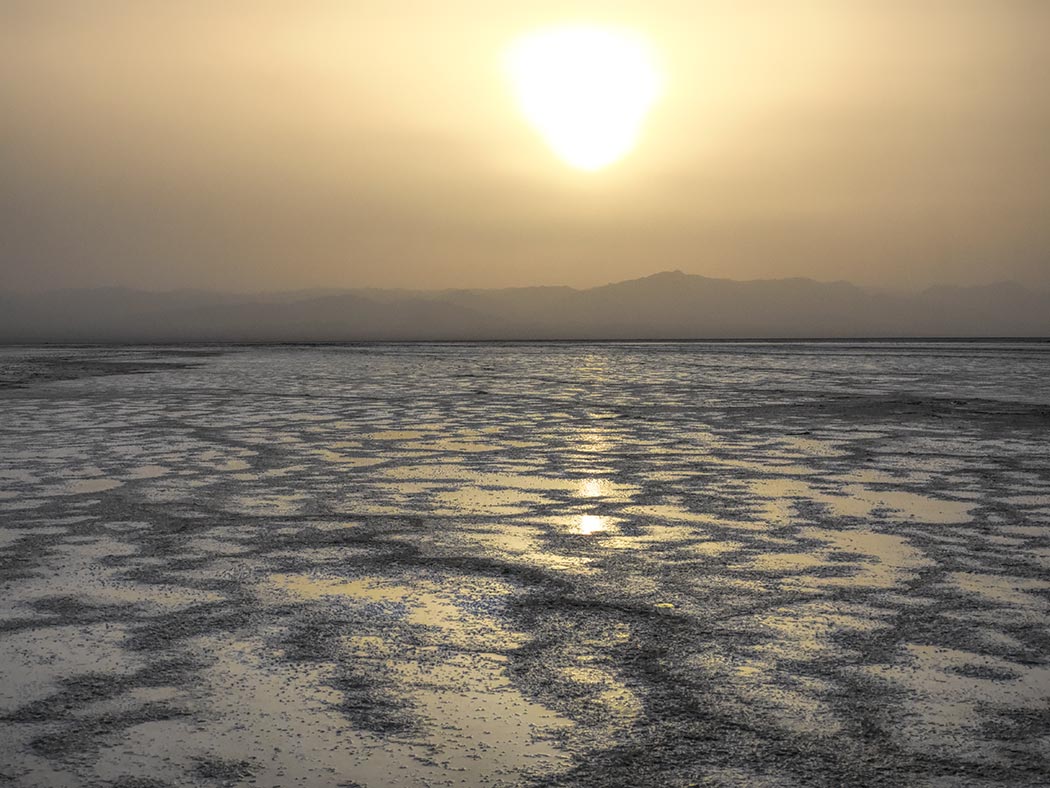I eased into the low canvas deck chair my driver had set up next to our jeep. Waving off the glass of wine he proffered, I focused on the enormous lemon-colored sun descending through the salt haze. Earlier, I had walked across the salt flats in Ethiopia’s Danakil Depression to Lake Karum. As I approached the turquoise shoreline, the hard-pan salt became soggy underfoot. Before long, I was carefully placing my feet on ridges in the characteristic polygonal desiccation cracks to avoid walking in the inch or more of water that flooded the salt.
This immense, featureless, nearly lifeless landscape has formed over millennia, as the area was periodically flooded by the Red Sea. Over time, layer upon layer of marine salt was deposited until it had accumulated into a thick salt crust. By the time Lake Karum, a former bay of the Red Sea, became disconnected to the sea, the accumulated salt was more than a thousand feet deep. Today the cycle of flooding continues when winds push the waters of Lake Karum over its banks. And while flooding ensures that the salt flats will endure, it also makes for ethereal scenes like this one, where the setting sun reflects on the mirrored surface of the flooded plains.

